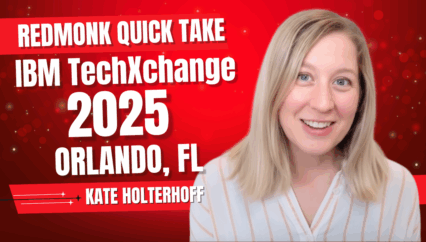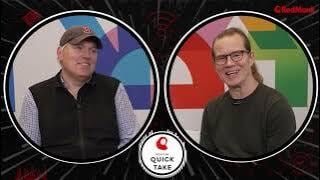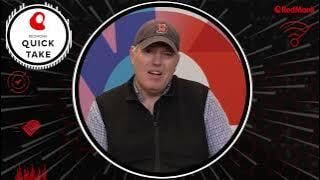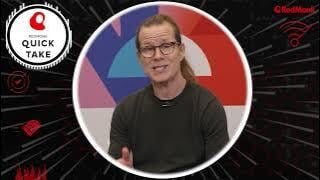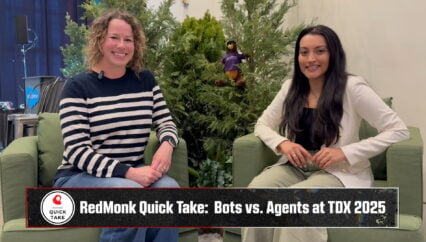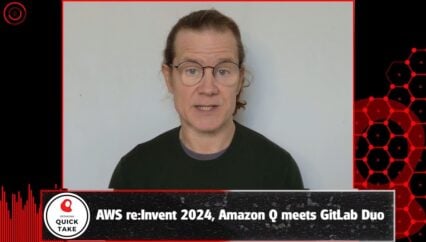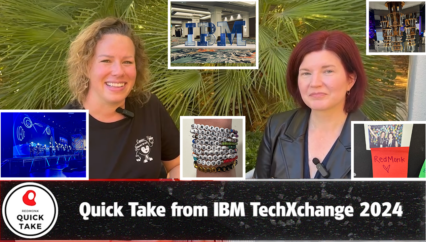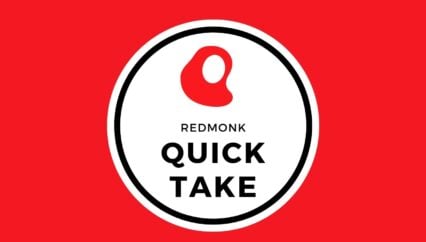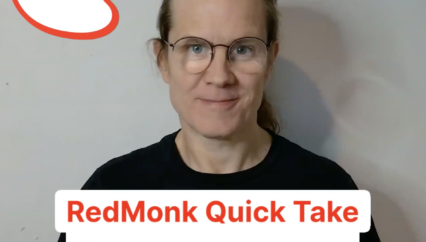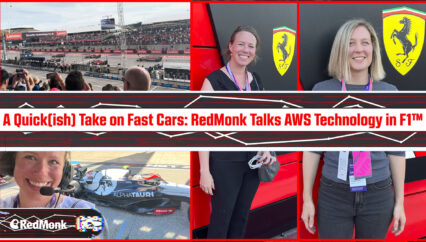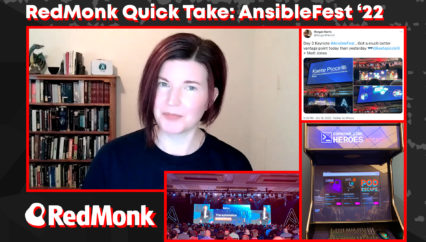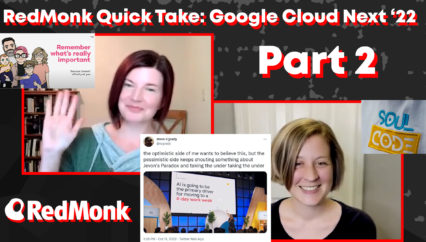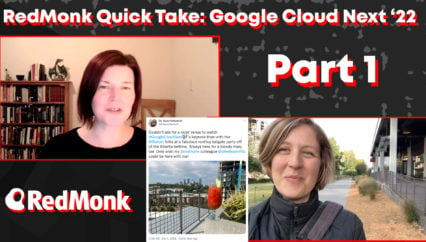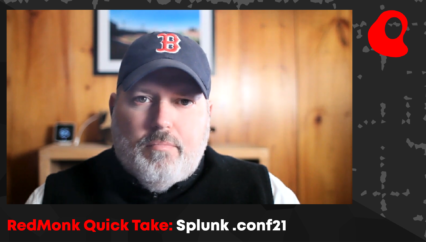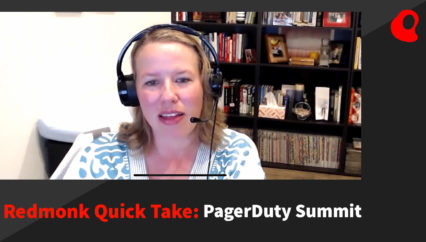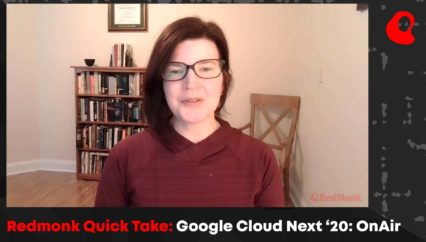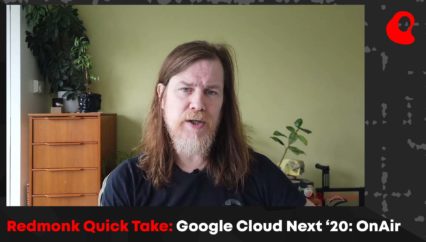In this interview from TDX, Rachel Stephens talks with Adam Zimman, Head of Product Marketing for Heroku, about the evolving role of Heroku within the Salesforce ecosystem. They discuss Heroku’s dual audience—both general-purpose developers and those integrating with Salesforce—highlighting new innovations like AppLink and Eventing that simplify application connectivity and event-driven workflows. Adam shares insights on Heroku’s ongoing evolution, customer success stories, and the broader Salesforce community’s growing recognition of Heroku’s value.
Transcript
Rachel Stephens: Hey, it’s Rachel Stephens, and I’m here with Adam Zimman. Adam, would you like to introduce yourself?
Adam Zimman: Sure. I’m Adam Zimman, and I’m the Head of Product Marketing for Heroku.
Rachel Stephens: Yes, and where are we at?
Adam Zimman: We are at TDX!
Rachel Stephens: Yeah, we are.
Adam Zimman: The greatest of all Salesforce conferences.
Rachel Stephens: Yes, we’re here in our little forest here with Codey the Bear. Exactly. And we’re out here in the Salesforce event that is designed for the developer. And are you feeling like you did a good job reaching the developer? How did you feel?
Adam Zimman: I mean, I think that we’ve done a great job reaching the developer. I think that it’s been great to have some conversations about how all of the pieces fit together and making sure that people are able to drive value within their organizations. Yeah.
Rachel Stephens: So I think Heroku is an interesting tool for Salesforce. It’s been in the Salesforce ecosystem for a very long time. Like, 2011?
Adam Zimman: Yeah, 2011, 2012 is when the acquisition happened.
Rachel Stephens: Yeah, so it’s been in the ecosystem for a long time. I think it plays an interesting role because it’s both used by people who use it just as a pad system for someone who just wants to do a general purpose workload, throw it up in the cloud with a git push Heroku main. You also have people who are using it in an I need to extend my Salesforce ecosystem into more elastic compute. I think it’s a little bit of a challenge, I think, sometimes to talk about Heroku because it serves two different audiences. Would you say that this week was probably more towards the latter audience, I would guess? Is that what you would say?
Adam Zimman: Absolutely. I think that an interesting part that we found, as I’ve been coming up to speed, so I just joined the Heroku team in Salesforce about four and a half, five months ago, and I’ve been learning a lot about current Heroku customers. The interesting thing is that so many Heroku customers that use us for that notion of a PAS that is quick and easy to be able to deploy, like you said, git push Heroku, and Heroku takes care of the rest. Those customers, oftentimes, they actually are Salesforce customers.
Rachel Stephens: Yes.
Adam Zimman: And so this is-
Rachel Stephens: So it’s not a clean split.
Adam Zimman: It’s absolutely not. And so this is an opportunity for us to get engaged with those individuals that are looking to be able to extend and really enhance their Salesforce experience and be able to build these custom actions for things like Agentforce or being able to have custom apps built in the language of their choice that they can incorporate back into their customer data and be able to make sure that they’re getting the best of both worlds. They’re getting that flexibility that you get from being able to code in any of the 10 languages that Heroku supports, as well as they’re able to take advantage of this trust layer that Salesforce and all of its products share to be able to maintain the security and the compliance standards that they need for their large organization when accessing customer data.
Rachel Stephens: Yeah. So one of the presentations that I went to this week that I really liked was about AppLink. And so I really liked the slide that did the before and after of connecting apps into, or Heroku apps back into Salesforce. So it’s like this 14 step, like, snakey slide of all the things that were required before versus how it looks now. Can you talk about Applink and where it came from and what it does?
Adam Zimman: First, I want to give a call out to Vivek, our PM, who’s responsible for not only Applink and Eventing, which are two products that we announced into pilot this week, but also he was the architect for that slide.
Rachel Stephens: That’s a good slide.
Adam Zimman: It’s a good slide. Yeah. So right now for organizations that are looking to connect something that they’ve built within Heroku into their Salesforce infrastructure and be able to make sure that all of that goodness that I talked about of being able to quickly and easily access the Heroku components from Salesforce, there’s a multi-step process. Now, granted, I’ve worked in enterprise infrastructure for a long time, and 14 steps, oddly enough, is not that many.
Rachel Stephens: Not that many.
Adam Zimman: It could be worse, but we wanted to make it even better. And so this is what we’ve done is we’ve made it so that literally it is a one-click process of you enable Applink within your Heroku organization and all of those things that you have built to be able to be exposed are instantaneously exposed up through your flow builder into Salesforce. And that can be for standard Salesforce flows, or it can be for Agentforce. If you’re looking to be able to enhance those agents or connect back into Compute Offload on Heroku, it gives you that quick and easy way to do it.
Rachel Stephens: Got you. And you also mentioned eventing.
Adam Zimman: Yes. So if you think of the AppLink connection is, as the name implies, you’re linking an application. You’re linking something, some type of compute workload that is running in Heroku back to Salesforce. The Heroku eventing is actually more the other direction in terms of it’s a pub/sub system. You’re capable of being able to subscribe and publish events. We have an event collector that’s capable of being used, or this is just being able to allow you to do event-driven workloads. You think about this in way of Agentforce connection. You may have an agent that you actually want it does… When it gets some type of request, you’re actually kicking off some type of additional action, and you can use the eventing link to kick off that action within an application running at Heroku. Or vice versa, you may actually have some app that you’re running in Heroku that after the app does some type of action, you actually want to trigger something that goes back to Agentforce. So this type of bi-directional activity, suddenly you have instant access to it with Heroku Eventing.
Rachel Stephens: Gotcha. How did it work before? Like I assume they talked to each other before.
Adam Zimman: Before, you had to set up a little bit more sophisticated system. You could use APIs to be able to drive some of these behaviors, but it was, again, you had to have something else that was driving some of this event actions.
Rachel Stephens: Got you. It’s just a more simplified process and easier set up.
Adam Zimman: Yep. Keep it simple. That’s what we try and do.
Rachel Stephens: That’s the Heroku model.
Adam Zimman: Yeah.
Rachel Stephens: Very nice. What would you say was your favorite part of being here?
Adam Zimman: Besides seeing you?
Rachel Stephens: Always.
Adam Zimman: I think that my favorite part of the event was, honestly, speaking with customers. I think that it was great to hear from these customers, both the customers that are being successful. We had a great presentation this week with Workday talking about how they’re already so engaged in this beta or this pilot and being able to make sure that they can try out not only a new functionality, but how it’s really helping them to be able to deliver value at scale. The other customer profile that I love to talk to is folks who either have very little experience with Heroku or people who aren’t using it at all, and they’ve got a problem, and I’m just like, Oh, that problem you have? I actually know how to solve it. And I’m just like, That’s kinda cool.
Rachel Stephens: Yeah, that’s great. And you feel like the broader Salesforce ecosystem is coming to understand the value of Heroku more and more?
Adam Zimman: I think that both internally and externally. This is one of those things where it was really a pretty significant push that we went through over the past about a year and a half, so before I got here, of really rebooting Heroku, right? As I joked with folks, prior to this, I was working with a lot of startups and startup ecosystem. I heard so many people talking about how they were looking to build the next Heroku. My thing of when I came to join my friend Betty here at Heroku was that I wanted to actually rebuild the next Heroku with Heroku. So make Heroku great again, as it were. But I think that it is such an opportunity to be able to take such a strong foundation in this platform that really everybody else has been trying to build on their own and say, Hey, wait, we’re still here. And not only that, but we are heavily investing and making sure that it’s meeting the needs of modern applications today.
Rachel Stephens: I love it. Adam, thank you so much for your time. And TDX out.
Adam Zimman: Cheers. Thanks, Rachel.
